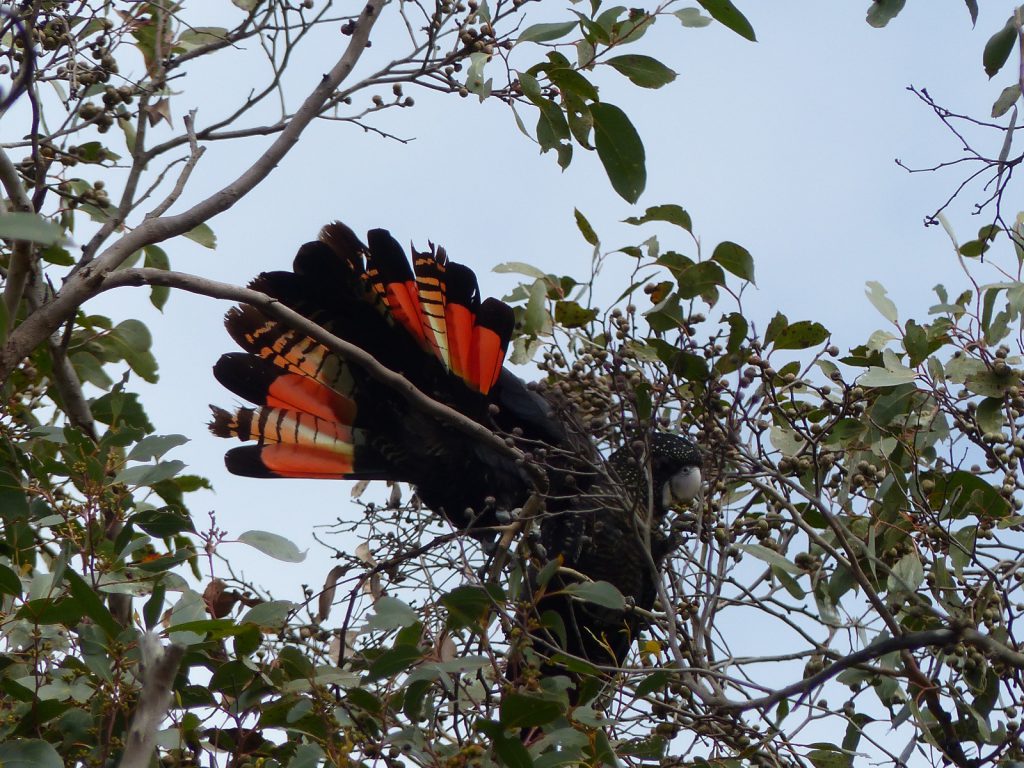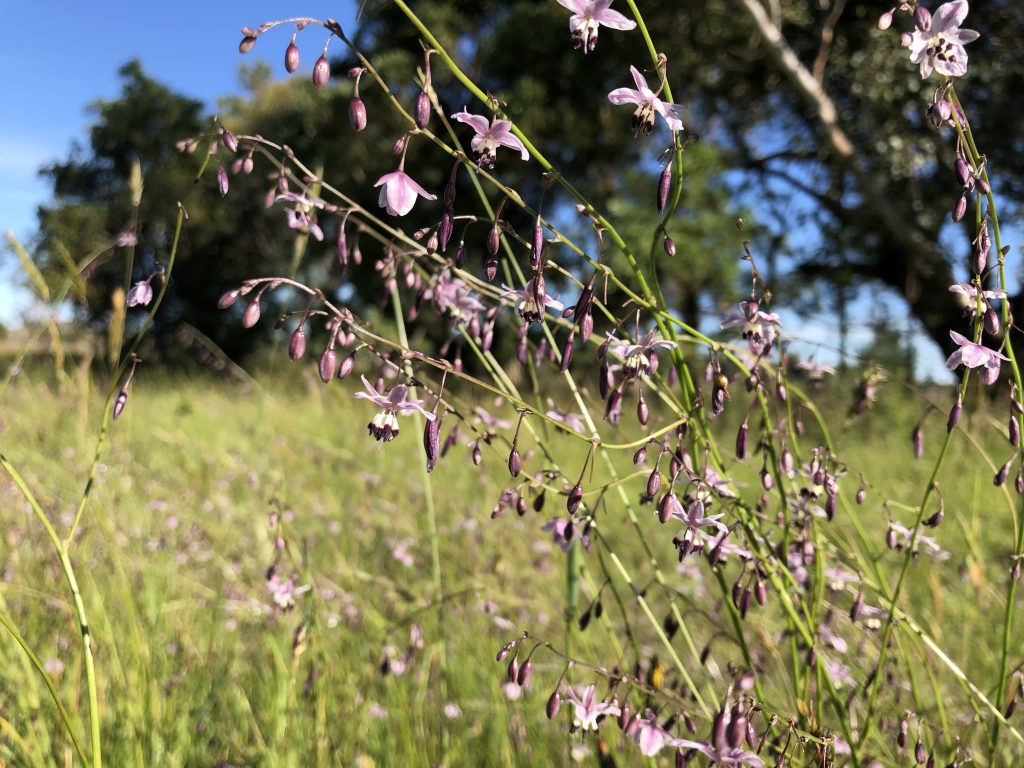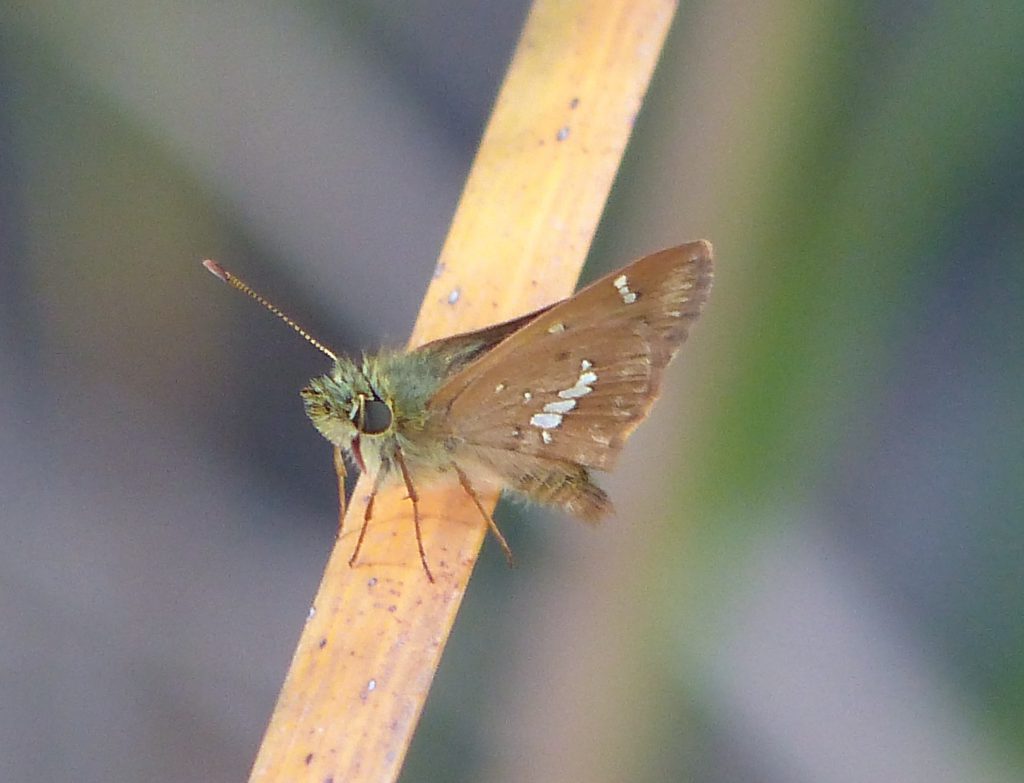Even more new species found at Mt Burr Swamp
As Nature Glenelg Trust and our fantastic volunteers continue the restoration journey at our Mt Burr Swamp property we are continually adding to our list of species for the reserve. As Rose recounts here, we can now confirm the presence of critically endangered Southern Bent-winged Bats on the property, an exciting discovery and something that highlights the importance of wetland restoration, both commenced and planned, at Mt Burr Swamp.
We can now also confirm the presence of another nationally threatened species, the endangered South Eastern Red-tailed Black-Cockatoo (Calyptorhynchus banksii graptogyne). The previous owners of Mt Burr Swamp, Helen and Neil Ellison, had told us they regularly observed flocks of these birds on the property, but since NGT’s purchase none had been observed. In January, Ben and Rose were on site when the distinctive call of Red-tailed Blacks rang out overhead. Looking up, a flock of about 20 individuals could be seen, flying in from the north-east. They alighted on a large Brown Stringybark near the southern boundary of the property where they spent about ten minutes before heading west towards Mt Burr. Red-tailed Blacks feed almost entirely on the seeds of Brown and Desert Stringybark (Eucalyptus baxteri and E. arenacea) and seasonally (January to March) on Buloke (Allocasuarina luehmannii). Given their highly nomadic movements, no single property will ever provide everything this species requires, but at Mt Burr Swamp we will do our bit to support them by replanting Brown Stringybark, at the sparse density that leads to large individual trees with plenty of gum nuts and seeds. Red-tailed Blacks nest in tree hollows, typically in River Redgums (E. camaldulensis) in close to proximity to Brown Stringybarks. There is just one large, old Redgum on the Mount Burr Swamp property. Perhaps in years to come, with more food trees nearby, we’ll discover Red-tailed Blacks nesting here.
Another exciting new find has been Bryan’s recent discovery a population of the Vanilla Lily (Arthropodium milleflorum) at the property. This species, which gives off a mild vanilla-like scent, is listed as vulnerable to extinction in South Australia. The Mt Burr Swamp population is possibly one of the largest in the region, with approximately 1000 individuals. In late spring 2018 these plants were looking spectacular in flower, and later in summer Bryan returned to collect seed. Through propagation and revegetation we can facilitate the expansion of this important population using local provenance. Discoveries like this emphasise the need for an adaptive approach to restoration. As we learn more about the existing ecological values of our reserves, the priorities and approaches we take to restoration need to remain flexible to accommodate our new understanding.
Bryan is definitely in the lead when it comes to discovering new populations on our Reserves. Another recent discovery of Bryan’s at Mt Burr Swamp was the White-banded Grass-dart (Taractrocera papyria). This rare butterfly occurs in grasses along creeklines and in swamps, particularly in areas like Mt Burr Swamp that remain damp and green through the summer. As one of Australia’s smallest butterflies, with a wingspan of about 20 mm, these animals are not easy to spot. Additionally, they are typically observed alone or in pairs, making them much more difficult to detect than some other butterfly species that occur in larger aggregations. By restoring the wetlands throughout the Mt Burr Swamp property, we’ll be providing habitat favoured by the White-banded Grass-dart.
Other recent sightings, new records for the property, are perhaps less unexpected and exciting, but still good to confirm. In December, Sheryl made our first observation of an Echidna, near the margin of the main swamp, and in January and February several staff members encountered very healthy looking Tiger Snakes.
With several of our target species, those we are specifically endeavouring to provide habitat for, yet to be observed at Mt Burr Swamp, stay tuned for further updates as the restoration journey continues.
If you’d like to get involved at Mt Burr Swamp, NGT will be running community revegetation events on site this winter. Again, stay tuned to this newsletter and our website for more details.



